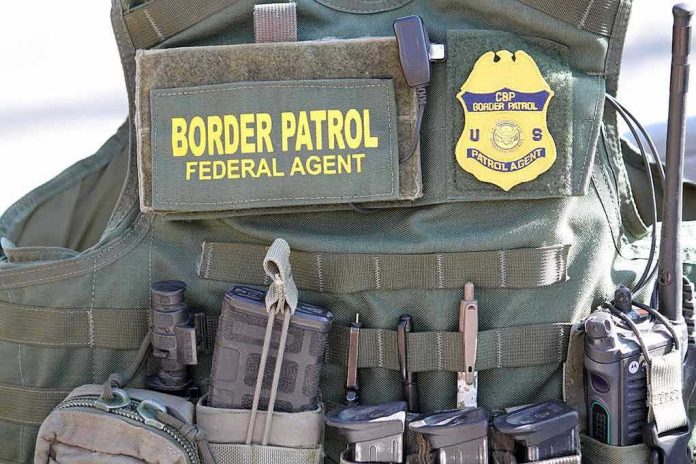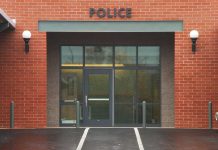
Shots fired at federal agents in Chicago’s Little Village have turned a routine immigration raid into a flashpoint of national debate about law enforcement, sanctuary city politics, and how far communities will go to resist federal power.
Story Snapshot
- Federal Border Patrol agents came under direct gunfire during an immigration operation in a major U.S. city, with the suspect still at large.
- The event triggered immediate, organized protests and violent confrontations between agents, police, and community members.
- Judicial injunctions restricting agents’ use of force set the stage for heightened risk and uncertainty on both sides.
- Operation Midway Blitz exposed deep fault lines between federal enforcement and Chicago’s immigrant-heavy neighborhoods.
Direct Gunfire Brings Federal Operations to a Boil
Border Patrol agents entered Chicago’s Little Village early on November 8, 2025, as part of Operation Midway Blitz. By mid-morning, a black Jeep rolled up and the driver fired multiple shots at federal agents boxed in by a hostile crowd. The suspect fled the scene, leaving agents unharmed but escalating already simmering tensions over aggressive federal immigration tactics. This incident marks one of the rare times in recent history where federal officers have been targeted by gunfire in a sanctuary city, creating a new sense of urgency among law enforcement and local officials.
Minutes after the shooting, protesters threw bricks and paint cans at Border Patrol vehicles, forcing Chicago Police to step in and evacuate agents from the area. The violence did not end there. Later that morning, a vehicle attempted to ram the Border Patrol convoy, prompting agents to deploy a controlled tire deflation device. The driver was arrested, but the convoy faced further impediments near an FBI facility as additional attempts to breach security were reported. These confrontations reveal the increasing willingness of some community members to physically resist federal presence, fueled by recent court rulings and widespread distrust.
Sanctuary City Tensions Reach a Breaking Point
Chicago’s Little Village, a vibrant Mexican-American neighborhood and economic hub, has become ground zero for resistance against federal immigration enforcement. Operation Midway Blitz, launched two months prior, intensified federal raids and drew organized protests from advocacy groups and residents. ICE watch teams, local activists, and legal organizations mobilized to monitor and challenge Border Patrol actions. Days before the shooting, a federal judge issued an injunction limiting agents’ use of force, adding legal complexity and uncertainty to an already volatile situation.
Community distrust of federal agents runs deep, rooted in years of alleged misconduct and clashes over sanctuary city policies. The Chicago Police Department finds itself in a precarious position—tasked with maintaining public order while balancing cooperation with federal authorities and the need to preserve community trust. This incident exemplifies the delicate power dynamics and the judicial system’s role in curbing federal overreach, setting new precedents for how such operations unfold in urban America.
Political and Legal Ramifications Intensify
The immediate aftermath saw the Department of Homeland Security confirm the attack and launch a manhunt for the shooter. No injuries were reported among agents or police, but the psychological impact reverberated throughout the immigrant community. Local businesses and daily life were disrupted as law enforcement presence intensified. The event sparked renewed calls from advocacy groups and city leaders for de-escalation and further legal protections for residents.
The Department of Justice moved to appeal the recent judicial injunction, arguing that restrictions on use of force endanger agents and hinder enforcement. Legal scholars and civil rights advocates counter that such tactics erode public trust and risk escalating violence. The incident has shifted the political conversation in Chicago, with city officials weighing changes to federal cooperation agreements and considering new measures to protect vulnerable populations. Nationally, the event could influence sanctuary city policies and reshape the debate on federal-local law enforcement collaboration.
Expert Perspectives: Risks, Rights, and the Road Ahead
Law enforcement experts point to the increasing risks faced during urban immigration raids, emphasizing the need for clear protocols to protect both agents and civilians. Civil rights advocates warn that aggressive federal tactics provoke violence and undermine the social fabric of immigrant communities. Legal scholars highlight the significance of judicial intervention and the potential for landmark legal challenges in the wake of this incident.
Federal officials frame the shooting as evidence of the dangers agents encounter, pushing for robust enforcement and expanded authority. Community leaders argue that such tactics are counterproductive, fostering fear and division rather than safety. As the search for the suspect continues and the legal battle intensifies, Chicago’s response will shape national strategies for immigration enforcement and the broader fight over America’s sanctuary cities.
Sources:
ABC News: Chicago police respond after shots fired at federal agents
ABC7 Chicago: Immigration agents pepper spray 1-year-old girl, DHS says shots fired at CBP
ABC News: DHS shooter at large after firing at Border Patrol in Chicago












